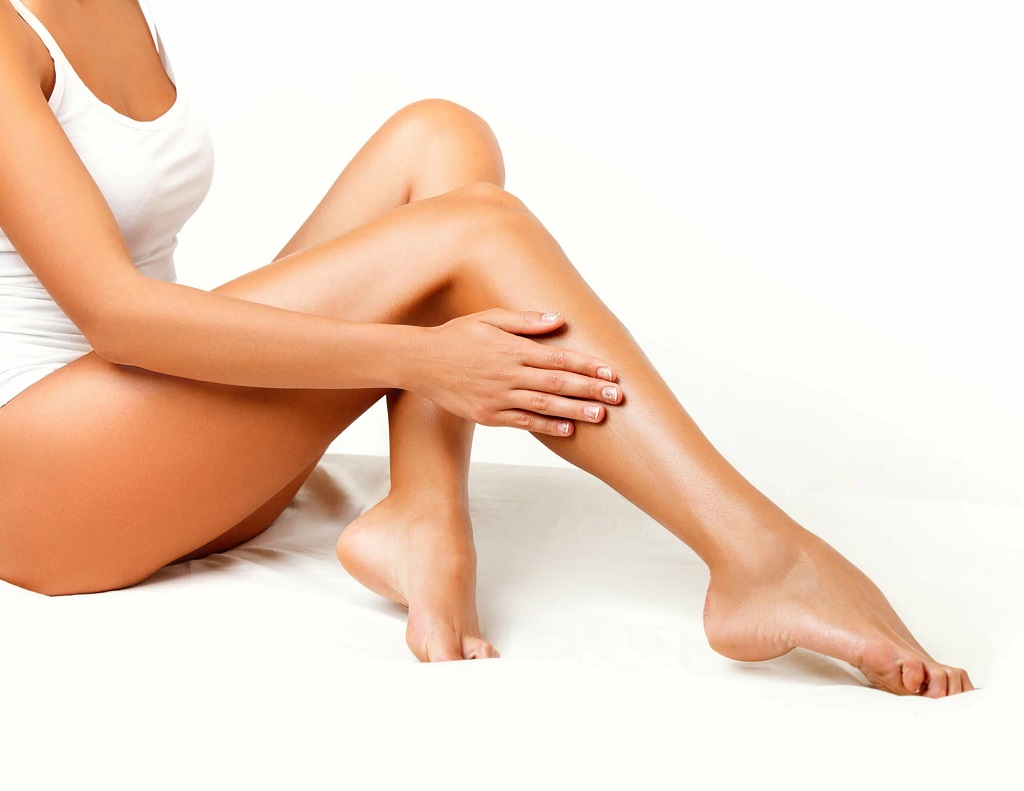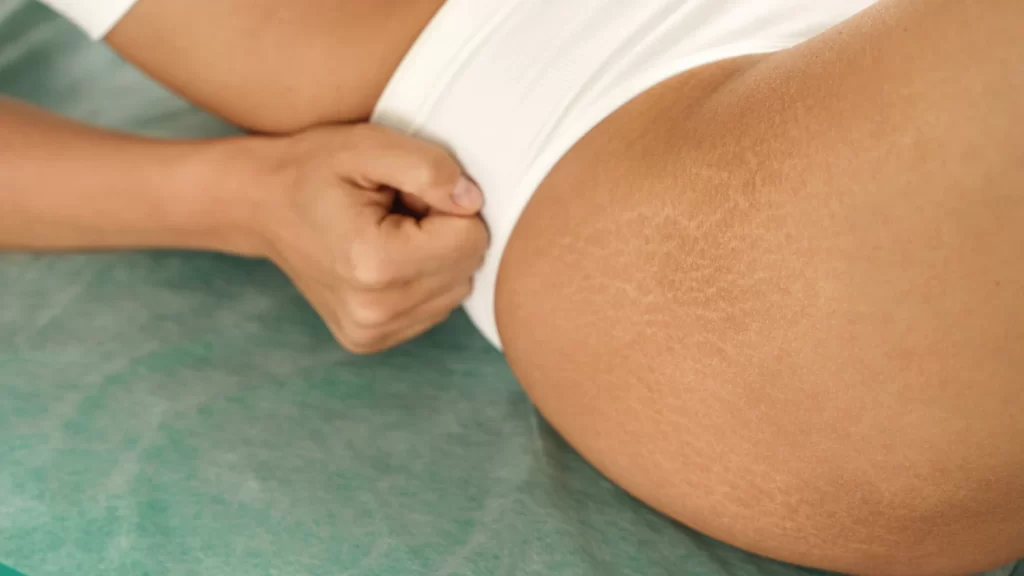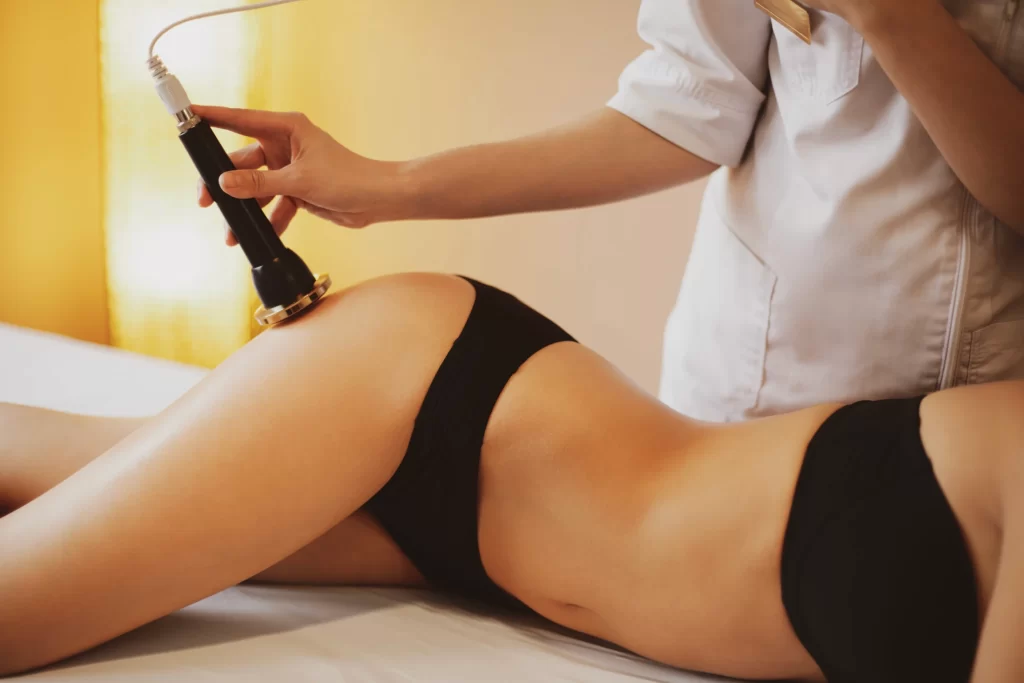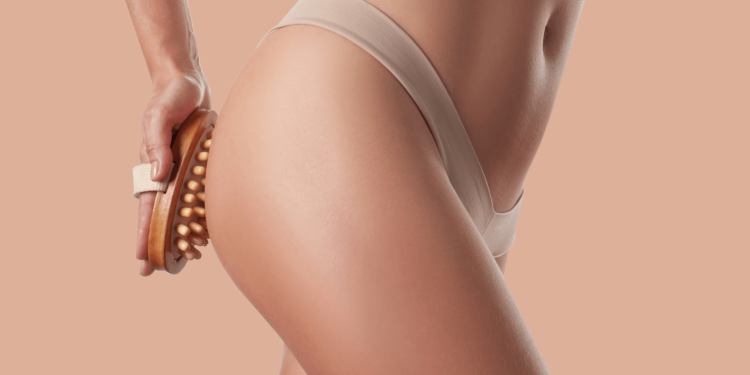Cellulite forms when fat cells accumulate under the skin, creating a dimpled appearance often compared to “orange peel skin.” Common areas affected include the thighs, buttocks, hips, and belly. In Italy, nine out of ten women deal with cellulite, and for 65%, it poses a significant aesthetic concern, particularly in the summer.
 Finding solutions can be challenging, as treatments vary based on the type and severity of cellulite. The main types are:
Finding solutions can be challenging, as treatments vary based on the type and severity of cellulite. The main types are:
Edematous Cellulite
Found in women aged 20-40, usually on the thighs and buttocks. It features “orange peel skin,” water retention, and may cause pain upon touch due to poor circulation. Overweight and menopausal women are more likely to experience this type.
Flaccid Cellulite
More common in women aged 40-50, it results in extreme skin looseness, primarily on the thighs and buttocks, but can also appear on arms and the belly. Lack of exercise and drastic weight loss diets are major contributors.
Compact Cellulite
Affects younger women, appearing on the inner knees and outer thighs, often accompanied by stretch marks. It is linked to hormonal changes, genetics, and poor nutrition.
Contrary to popular belief, cellulite is not limited to those who are overweight. Many factors influence its development, and while complete elimination isn’t possible, its effects can be mitigated.
 Factors Influencing Cellulite Development
Factors Influencing Cellulite Development
Genetics
A hereditary link exists—if your mother or grandmother had cellulite, you might be predisposed. Other genetic factors include fat accumulation tendencies, poor circulation, and water retention.
Genus
Although men can have cellulite, it’s predominantly seen in women (90% compared to 10% in men). Men’s cellulite usually affects the abdomen and thighs.
Hormonal Changes
Hormonal fluctuations during puberty, menstrual cycles, menopause, or pregnancy can lead to cellulite due to elevated estrogen levels and water retention.
Lifestyle
Unhealthy habits like poor diet, inactivity, lack of sleep, wearing high heels, smoking, and hot showers can exacerbate cellulite by hindering circulation.
Effective Strategies to Reduce Cellulite
1 Balanced Diet
 A nutritious diet is crucial for maintaining a healthy weight and reducing cellulite. Avoid high-calorie foods, excessive salt, alcohol, and caffeine. Focus on fruits and vegetables, especially those rich in antioxidants and minerals like oranges, strawberries, asparagus, and artichokes. Staying hydrated is key to preventing water retention and keeping skin supple.
A nutritious diet is crucial for maintaining a healthy weight and reducing cellulite. Avoid high-calorie foods, excessive salt, alcohol, and caffeine. Focus on fruits and vegetables, especially those rich in antioxidants and minerals like oranges, strawberries, asparagus, and artichokes. Staying hydrated is key to preventing water retention and keeping skin supple.
2 Physical Activity
 Exercise won’t eliminate cellulite but can reduce its appearance. Activities like running, walking, squats, and swimming improve circulation, tone muscles, and prevent water retention.
Exercise won’t eliminate cellulite but can reduce its appearance. Activities like running, walking, squats, and swimming improve circulation, tone muscles, and prevent water retention.
3 Stress Reduction
 High cortisol levels from stress can increase fat deposits. Practices like yoga can help relax muscles, enhance flexibility, and improve cellulite.
High cortisol levels from stress can increase fat deposits. Practices like yoga can help relax muscles, enhance flexibility, and improve cellulite.
4 Avoid Tight Clothing
 Tight clothes can restrict circulation and promote water retention. Opt for looser, breathable fabrics like cotton.
Tight clothes can restrict circulation and promote water retention. Opt for looser, breathable fabrics like cotton.
5 Use Creams and Oils
 Anti-cellulite creams and oils with ingredients like caffeine, centella asiatica, and vitamin E help break down fat deposits and improve skin texture. Apply them with gentle massages to stimulate circulation and enhance product absorption.
Anti-cellulite creams and oils with ingredients like caffeine, centella asiatica, and vitamin E help break down fat deposits and improve skin texture. Apply them with gentle massages to stimulate circulation and enhance product absorption.
6 Consider Professional Treatments
 Specialized clinics offer treatments like ultrasound, radiofrequency, and shock waves to target cellulite. These methods break down fat tissue, reduce flaccidity, and stimulate lymphatic drainage.
Specialized clinics offer treatments like ultrasound, radiofrequency, and shock waves to target cellulite. These methods break down fat tissue, reduce flaccidity, and stimulate lymphatic drainage.
By adopting these strategies, you can effectively manage cellulite and improve your skin’s appearance.





















